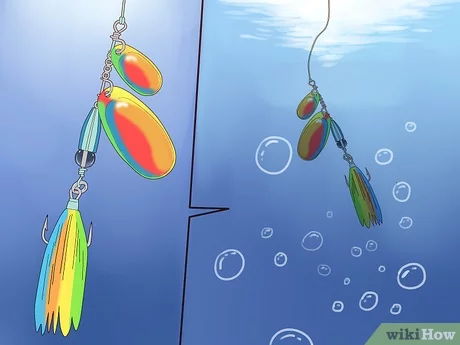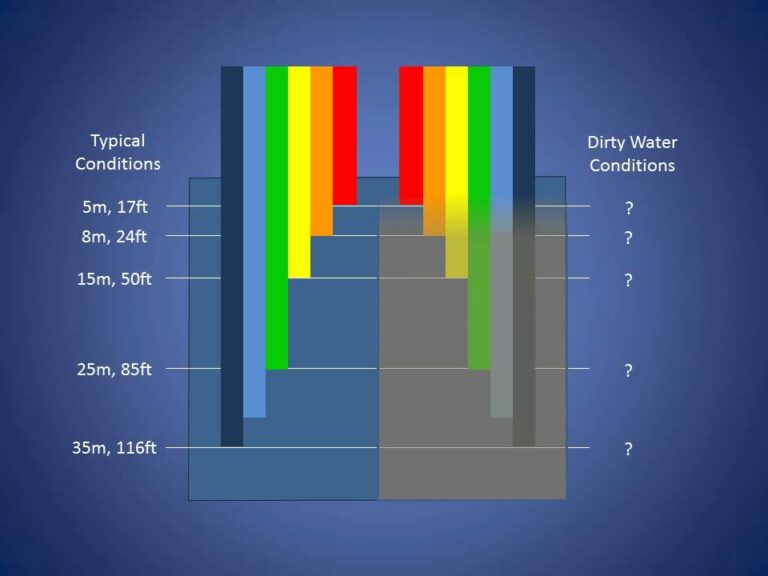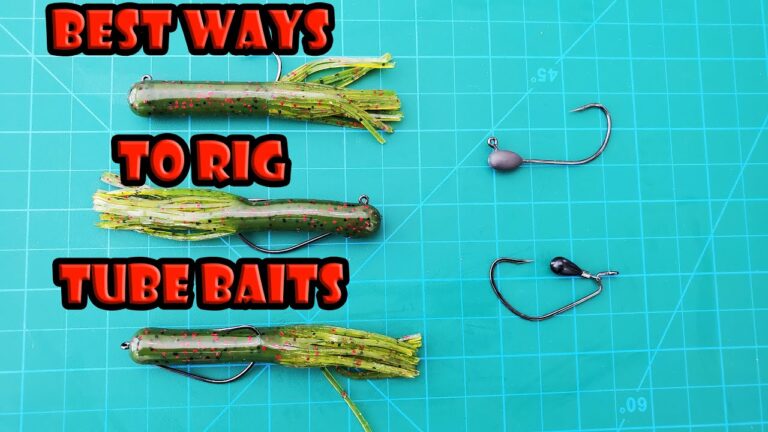How to Work a Texas Rig
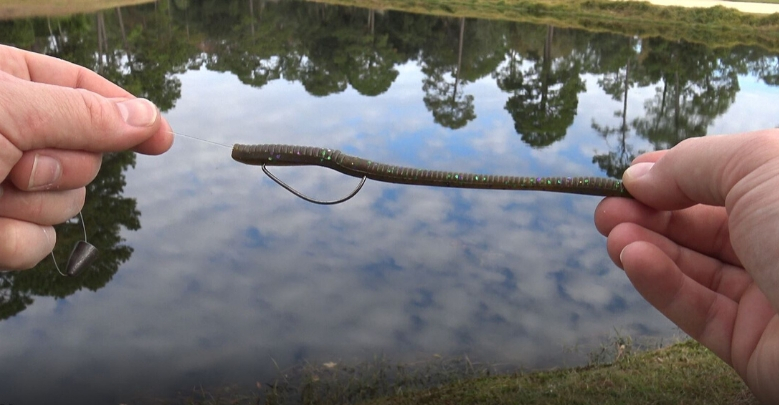
To work a Texas Rig, attach a worm-shaped bait to a hook, slide a bullet-shaped weight onto the line, and then cast and retrieve the rig, allowing it to bounce along the bottom. The Texas Rig is a versatile and effective technique for bass fishing that allows the bait to be presented in a natural and weedless manner.
By following a simple step-by-step process, you can successfully work a Texas Rig and increase your chances of catching bass. We will discuss the equipment needed for a Texas Rig, the proper way to set it up, and the best techniques for working the rig to attract bass.
So, let’s dive in and learn how to work a Texas Rig for an exciting and successful fishing experience.
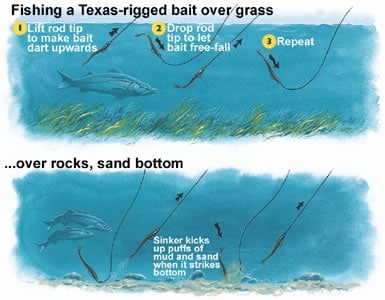
Credit: www.saltwatersportsman.com
Categories Of Texas Rigging
The Texas rigging technique can be categorized into different types based on the bait used. Creature baits are a popular choice, offering versatility and lifelike movements underwater. Using weightless setups can be effective, allowing the bait to fall naturally, enticing strikes. Incorporating big worms can attract larger bass, making them suitable for varying conditions. Additionally, small baits can be advantageous, especially in situations where a finesse approach is required.
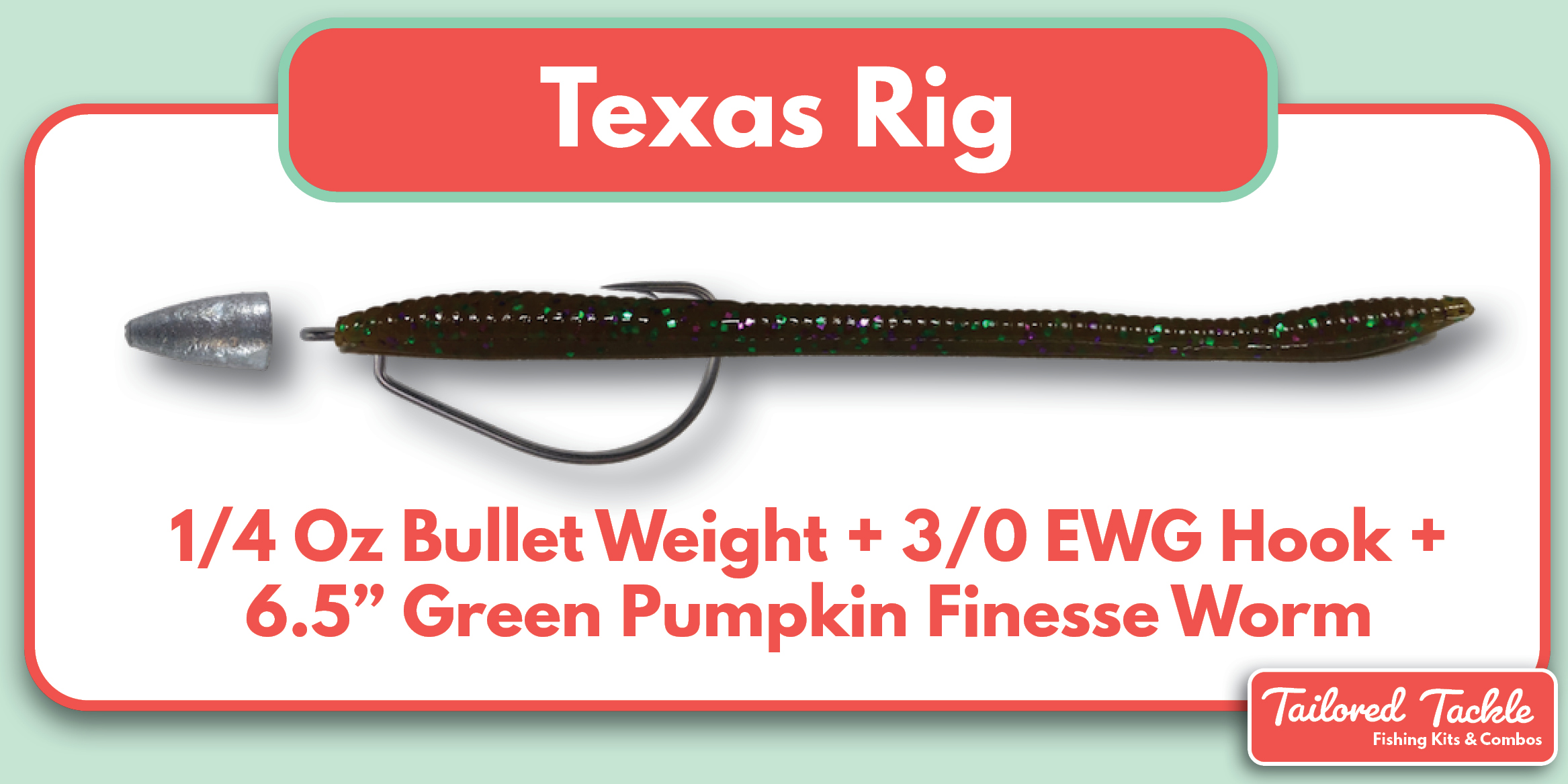
Credit: tailoredtackle.com
How To Rig A Texas Rig
Attaching the hook to the worm: The first step in rigging a Texas Rig is to attach the hook to the worm. Start by inserting the hook point into the top of the worm’s head and thread it through until the hook is almost completely buried. Then, push the hook point out of the side of the worm’s body, about a quarter of an inch from the head.
Tying the hook: After attaching the hook to the worm, tie it securely using your preferred knot. The most common knot for this rig is the improved clinch knot. Make sure to wet the line before tightening the knot to avoid friction and ensure a strong connection.
Pegging the hook: To prevent the weight from sliding up and down the line, peg the hook using a toothpick or a specialized pegging tool. Simply insert the toothpick or tool into the hole on the top of the weight and break it off, leaving a small portion sticking out. This will securely hold the weight in place.
Techniques For Fishing The Texas Rig
When it comes to fishing the Texas Rig, there are different ways to cast. Whether you’re fishing a hard bottom or retrieving the bait, there are techniques that can help you be more successful. When casting, practice accuracy to ensure that your bait lands in the desired location. Fishing a hard bottom requires sinking your bait slowly to avoid snagging. Pay attention to the bottom composition and adjust your retrieve accordingly. When retrieving the bait, vary your speed to imitate the movement of prey. Experiment with different techniques such as hopping, dragging, and twitching to entice the fish to strike. Remember to be patient and persistent, as fishing the Texas Rig requires practice and experience. Enjoy the process and have fun on the water!
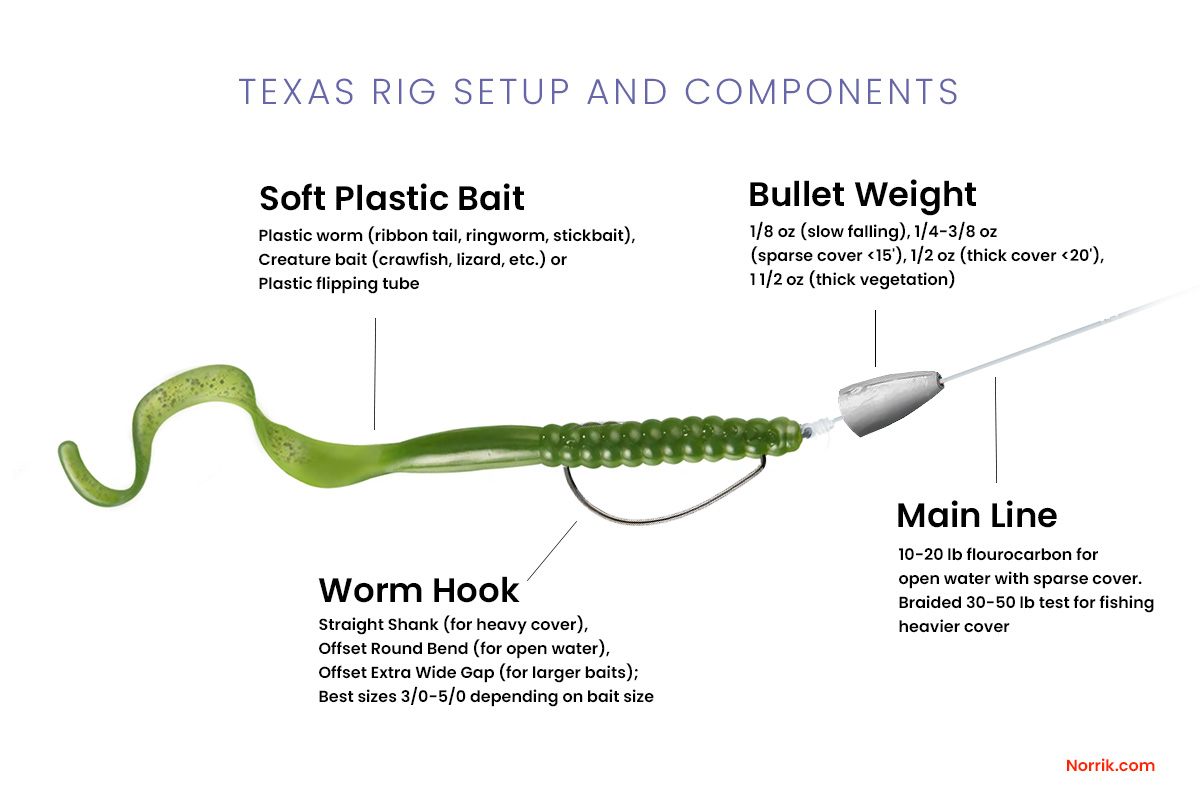
Credit: norrik.com
Tips And Tricks For Texas Rig Fishing
Texas rig fishing is a versatile technique for catching bass, but it has its limitations and troubleshooting. To get the most action from your soft plastic bait, consider using a swimming worm or curl tail worm. Choosing the best Texas rig hooks is crucial for a successful fishing experience. Retie often to avoid losing your catch, and experiment with different worm types and weights to find out what works best for you.
Different Types Of Worms For Texas Rig
Discover the different types of worms you can use for a Texas Rig. Learn how to effectively work a Texas Rig to catch more bass.
Different Types of Worms for Texas Rig: – Ribbon Tail Worms: Ribbon tail worms are popular for Texas rig fishing as their long, wavy tails create enticing movements in the water. These worms are great for imitating injured baitfish and are effective for attracting bass. – Curly Tail Worms: Curly tail worms have a unique curly tail design that creates an enticing fluttering action in the water. This action can trigger aggressive strikes from bass. They work well in both clear and murky water conditions. – Finesse Worms: Finesse worms are smaller in size compared to other worm varieties but are highly effective for Texas rig fishing. They are known for their subtle movements and natural appearance, making them ideal for targeting bass in heavily-pressured or finicky conditions. Using different types of worms for Texas rig fishing allows anglers to adapt to various water and fishing conditions, increasing their chances of success on the water.Frequently Asked Questions For How To Work A Texas Rig
How Do You Do A Texas Rig Step By Step?
To do a Texas rig: 1. Insert the bullet weight. 2. Tie on the hook. 3. Push the hook through the center of the bait. 4. Pull the hook back into the bait. 5. Ensure the hook is securely attached to the bait.
What Is The Best Action For A Texas Rig?
The best action for a Texas rig is to work it with a slow and subtle movement, dragging it along the bottom to imitate a natural prey.
When And Where To Fish A Texas Rig?
Fish a Texas rig anytime and anywhere for optimal results. This versatile rig is effective for bass fishing.
What Is The Point Of A Texas Rig?
The Texas rig is designed to present soft plastic baits weedlessly and effectively entice fish. It’s versatile for various fishing techniques.
Conclusion
Mastering the Texas rig will elevate your bass fishing game to new heights. By understanding the setup, presentations, and techniques involved, you can entice more bites from wary bass. With practice and perseverance, this versatile rig will become a staple in your angling arsenal.
Keep exploring its nuances and refining your skills for a truly rewarding fishing experience.
